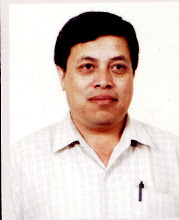Kingdom Monera
Characters
Unicellular, microscopic, prokaryotic and found greatest in number on earth
Lack of well organized nucleus, not surrounded by nuclear membrane, nucleus consists of double stranded DNA, nuclear contents lie any where scattered in protoplasm.
Most of them rigid cell wall
Various mode of nutrition, autotrophic, parasitic, symbiotic or saprophytic known as decomposers which convert complex organic matter into simple and soluble forms.
Can tolerate extreme environmental conditions like temperature pH absence of O2.
Bacteria were first discovered by Dutch naturalist Anton Van Leeuwenhoek (1632-1723). He discovered the first microscope in the 17th C. He observed Bacteria in June 10, 1675. The term bacteria was given by Ehrenberg in 1838. The study of Bacteria is called Bacteriology. Bacteria can withstand temp up to 78 oC and -190 oC. There are two types of Bacteria Gram +ve and Gram –ve based on stain.
Kingdom Protista
Characters
Unicellular microscopic eukaryotic organism with well organized nucleus. Besides nucleus, mitochondria , endoplasmic reticulum, golgi bodies plastids etc present.
Both autotrophic and heterotrophic mode of nutrition.
Photosynthetic protists are chief prodders of ocean, fresh water bodies and known as phytoplankton .
The non photosynthetic protists are called zooplankton which are primary consumers.
Some act as decomposers
Reproduce both sexually and asexually. Some like Euglena exhibit flexible life style. In absence of light ingest food and in he presence of light show autotrophic mode of nutrition.
Kingdom Animalia
Characters
Includes multi cellular, eukaryotic animals.
Heterotrophic mode of nutrition.
They are called consumers as they depend on others
Great variety ranging from invertebrates to vertebrates.
Lack of green pigment chlorophyll, cell wall.
Holozoic, parasitic
Reserve food in the form of glycogen
Have locomotory organ and sense organ.
Kingdom plantae
Characters
Includes multi cellular eukaryotic plants found on land, sea water or freshwater. They can be alga, bryophytes, pterydophytes, gymnospersm and angiosperm. All are photosynthetic hence called autotrophs and producers of ecosystem.
Cell wall is made up of cellulose
Some are parasitc(Cuscuta). Some insectivorous like Pitcher plant and others symbiotic( leguminous plants.
Fixed on land and no locomotory organ.
Have chlorophyll and can synthesize food.
Kingdom Fungi( Mycota)
Characters
Includes multi cellular eukaryotic plants with heterotrophic mode of nutrition. Size vary from microscopic to bracket fungi, toadstools. Puffballs which are seen
with unaided eye.
Mostly saprophytes feeding on dead and decaying organic matter also known as decomposers.
Cell wall is made up of chitin or cellulose or both
Exists as a mycelium made of network of branching multi cellular threads called hyphae
Some are parasitic eg. Puccinia
Body is thallus( not differentiated into root, stem and leaf.
Lack chlorophyll, cannot manufacture food
Non vascular
Reproduce by spore forming, asexual and sexual method
Reserve food in the form of glycogen and oil globules.
Some harmful, causes diseases
Some beneficial, used in industry like alcohol, enzymes. Vitamins, bread and antibiotics, some as food.
Found in almost all habitat where organic material is available.
Subscribe to:
Post Comments (Atom)

No comments:
Post a Comment